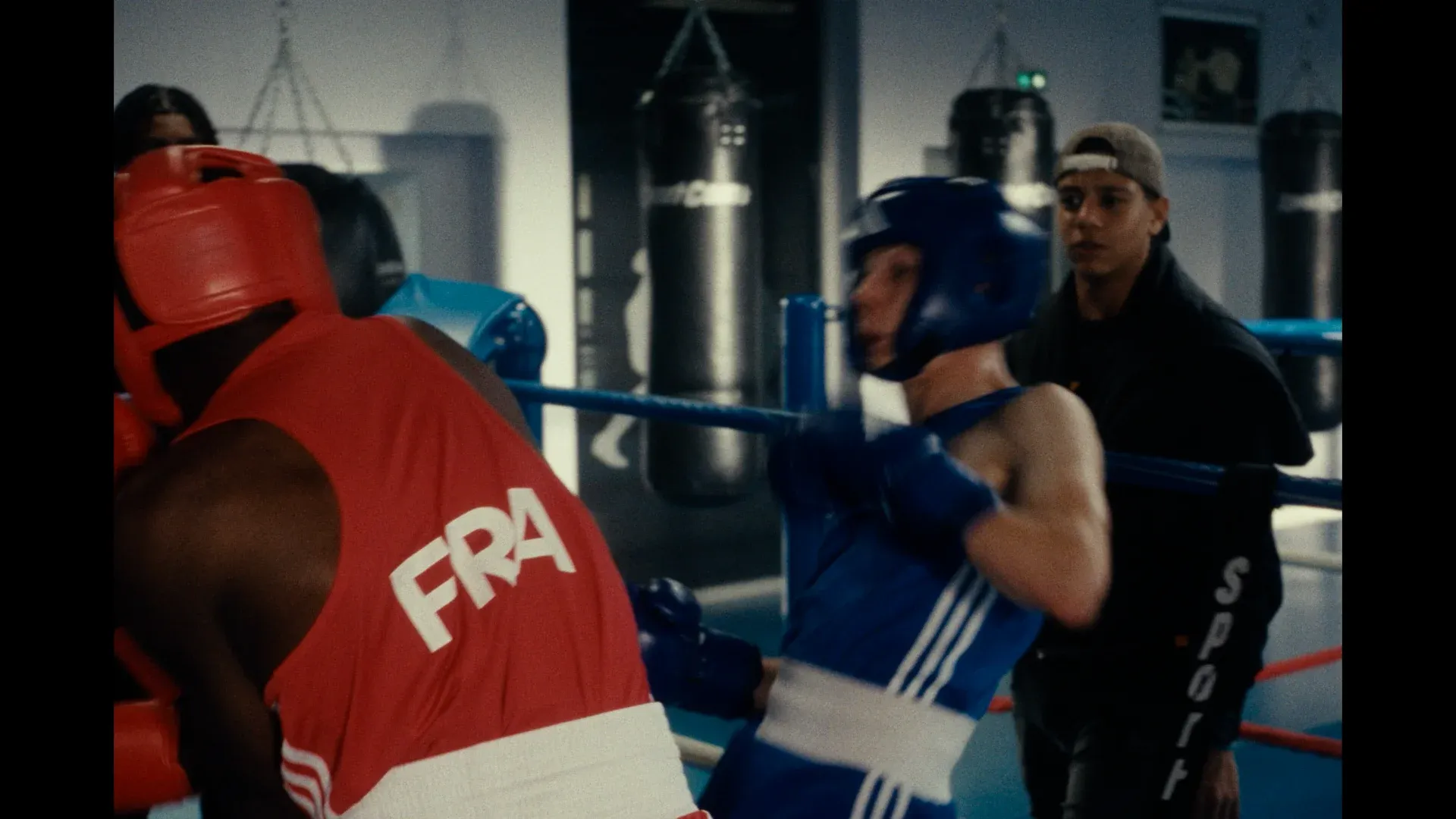Camille reigns supreme at a French sports-study boarding school, his every jab and uppercut marking him as the nation’s junior boxing champion. Yet the moment he plummets ten metres down a rocky incline, the gravity of his world shifts—muscles stiffen with phantom pain, confidence fractures and a once-tight brotherhood begins to splinter. Set against a backdrop of echoing gymnasiums and mist-shrouded woods, Wild Foxes threads high-octane fight sequences with hushed forest vignettes, creating a rhythm that echoes the push-and-pull of physical mastery and introspection.
The film’s environment recalls the focused energy found in Indian parallel-cinema classics, where the body often becomes both canvas and battleground—think Mrinal Sen’s explorations of societal constraints or the visceral realism of contemporary sports dramas like Bhaag Milkha Bhaag. Carnoy’s camera shifts from steady wide shots in the ring to handheld immediacy, mirroring Camille’s fluctuating sense of control. The forest, where the young boxers leave raw meat for foxes, serves as a potent symbol of wildness and survival—an echo of rural settings in Bollywood that underscore a character’s internal struggle through natural imagery.
This collision of raw athleticism and quiet ritual hints at a film that examines identity through both a universal lens and a European arthouse sensibility—an approach that resonates across cultures.
Faces of Strength and Fragility: Performances That Punch Through
Samuel Kircher’s Camille enters the frame with the assured gait of a seasoned athlete—light on his feet, magnetic in the ring and crowned the peerless leader of his cohort. His pre-fall swagger recalls the youthful brio of Hindi parallel-cinema icons like Naseeruddin Shah in Aakrosh, where physicality underpins authority.
After his ten-metre plunge, Kircher subtly trades bravado for tremors of doubt: a rigid posture, darting eyes and whispered breaths that signal panic-laden relapses. His transition from invincible to vulnerable mirrors global sports dramas—from Slumdog Millionaire’s survivor ethos to European art-house restraint—yet retains a specificity in his haunted glances and hollowed cheeks.
Faycal Anaflous’s Matteo is the pillar beside him: steadfast in the training ring, co-conspirator in their fox-feeding ritual, and the silent witness to Camille’s unraveling. Anaflous shifts from buoyant camaraderie—shoulder bumps and shared TikTok skits—to furtive glances as group loyalty fractures, evoking the agonizing loyalty dilemmas in Bollywood’s Shahid.
In the ensemble, Jef Jacobs’s Pierre stands out as the casual tormentor, his offhand cruelty chiseling Camille’s exile with a chilling ease familiar from classroom dramas in Indian parallel works. Anna Heckel’s Yas—trumpet in hand, Taekwondo poised—offers the first emotional counterpoint, her musical refrains and deliberate edits punctuating the film’s soundscape with moments of unexpected grace. Together, these performances map a shifting hierarchy where every gesture carries the weight of survival.
Crafting Rhythm and Space: Carnoy’s Visual Symphony
Valéry Carnoy orchestrates Wild Foxes with a tempo as varied as a Bollywood epic’s shift from exuberant song to contemplative interlude. High-energy boxing scenes throb with urgency—quick cuts, tilted handheld shots and the jarring clang of gym equipment—then ease into lingering forest tableaux where shafts of sunlight fall on damp earth. This swing in pacing echoes Hindi parallel-cinema’s use of extremes, from Satyajit Ray’s brisk village sequences to his slower riverbank moments.
Arnaud Guez’s lens moves with Camille’s fortunes. In triumph, the camera circles at eye level, placing him dead centre; after his fall, it drifts to tight, off-kilter angles, as if the frame itself doubts his place. Guez layers footage from phone cameras—fleeting glimpses of TikTok-style banter—against composed wide shots of misty woods. The result feels alive yet controlled, a technique seen in global sports dramas that blend vérité realism with formal precision.
Editing and sound design work hand in glove. Fight sequences crackle with staccato cuts and echoing punches, while forest scenes stretch into unbroken takes. Ambient noise—birdsong, distant footfalls—sneaks beneath a solitary trumpet melody, marking Camille’s fragile mood. Production design reinforces this duality: the boarding-school’s austere dorms and heavy gloves contrast with the ritual of leaving raw meat in the woods, a prop-driven reminder of survival’s stark requirements.
Rituals of Strength and Silence
The film pits the ritual of violence in the ring against the taboo of visible wounds, recalling the body-focused truths of Indian parallel cinema from Mrinal Sen’s visceral explorations to the raw physicality in Mary Kom. Camille’s fall cracks the code of “show no weakness,” exposing a pressure cooker where any sign of pain becomes liability. This tension mirrors Bollywood narratives like Gangs of Wasseypur, where brute force and hidden scars coexist beneath a veneer of bravado.
Camille and Matteo begin as inseparable sparring partners, their bond sealed through shared triumphs and the secret ritual of feeding foxes under moonlight. As the group shifts, Matteo’s loyalty fractures under peer demand, echoing betrayal arcs in Hindi coming-of-age tales such as Udaan. Isolation takes on a collective cruelty, each look and whispered comment chiseling Camille’s exile.
Camille’s journey wrests him from scripted expectations—an abusive father’s legacy and a golden athletic destiny—into a personal reckoning. The fox-feeding acts as symbolic mirror: wildness poised between predator and prey. This image recalls forest rituals in global art-house films, where nature reflects inner turmoil.
Moments of silence in the woods and sudden bursts of violence in the gym leave viewers unsettled. By balancing brutal encounters with quiet reflection, the film forges an emotional resonance that lingers long after the final bell. Wild Foxes premiered in the Directors’ Fortnight section at the 2025 Cannes Film Festival.
Full Credits
Director: Valéry Carnoy
Writer: Valéry Carnoy
Producers: Julie Esparbes
Co-Producers: Ines Daïen Dasi
Cast: Samuel Kircher, Fayçal Anaflous, Jef Jacobs, Anna Heckel, Jean-Baptiste Durand, Hassane Alili, Salahdine El Garchi
Director of Photography (Cinematographer): Arnaud Guez
Editor: Suzana Pedro
Composer: Pierre Desprats
The Review
Wild Foxes
Wild Foxes delivers a potent mix of physical rigor and emotional depth, anchored by Valéry Carnoy’s assured vision and Samuel Kircher’s transformative lead turn. Its contrasting rhythms—harrowing ring sequences and hushed woodland rituals—linger in the mind, offering a raw exploration of resilience and identity.
PROS
- Samuel Kircher’s performance captures both strength and fragility
- Dynamic cinematography balances intense action with serene forest scenes
- Authentic group dynamics evoke genuine tension and loyalty shifts
- Sound design and trumpet motif underscore Camille’s inner turmoil
CONS
- A few narrative turns feel underexplored
- Some supporting roles lack development
- Occasional dips in pacing between key episodes
- Fox-feeding subplot can seem abruptly placed

















































